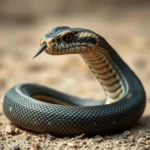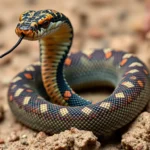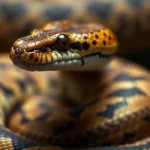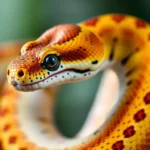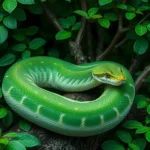Unrveling the Mystique of the False Cobra: Symbolism and Spirit Animal
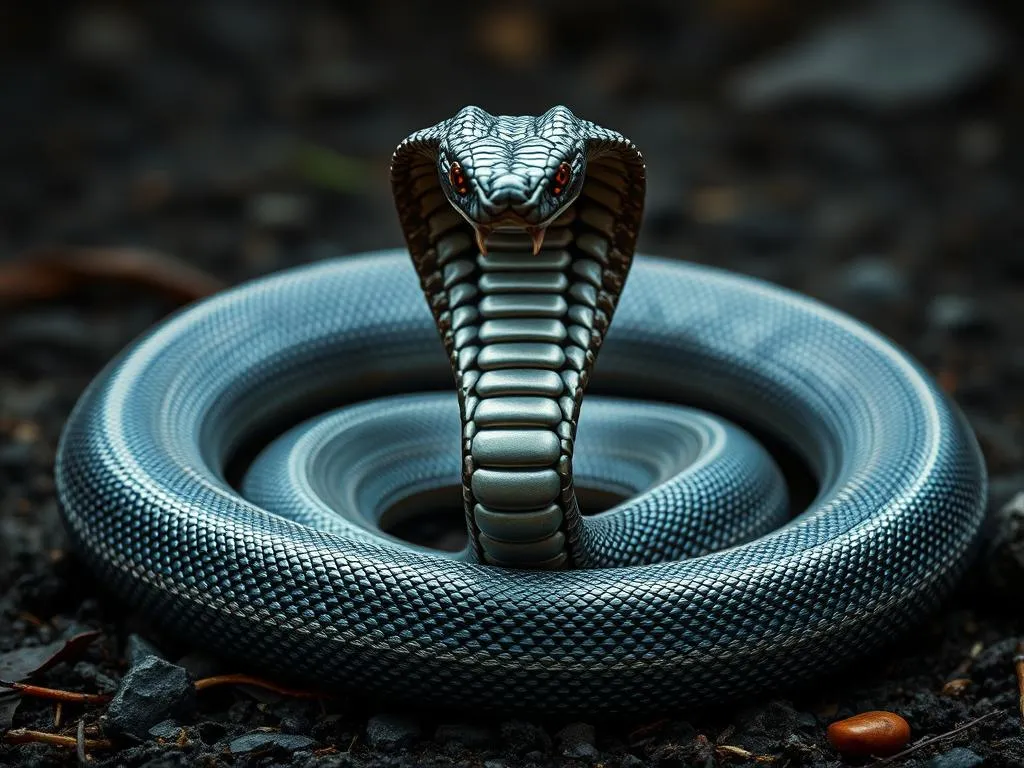
Disclaimer: Some images on this website are AI-generated artworks and may not accurately represent real animals.
The false cobra is a captivating creature that intrigues many due to its unique characteristics and the rich symbolism associated with it. This article delves into the symbolism and meaning of the false cobra, exploring its physical traits, behavior, and cultural significance. Join us as we uncover the layers of meaning behind this fascinating serpent.
Understanding the False Cobra
Physical Description
The false cobra, often mistaken for its venomous cousins, displays a series of remarkable physical traits that capture the attention of both enthusiasts and casual observers alike. Below is a table summarizing its physical characteristics:
| Feature | Description |
|---|---|
| Length | Typically ranges from 1 to 1.5 meters |
| Coloration | Usually brown or gray with darker patterns |
| Head Shape | Triangular-shaped head with a flattened neck |
| Eyes | Large, distinct eyes that provide excellent vision |
| Scales | Smooth, shiny scales that reflect light |
The false cobra primarily inhabits grasslands, savannas, and scrublands, where it can easily blend into its surroundings. This camouflage not only aids in hunting but also provides protection from potential predators.
Behavioral Traits
One of the most striking aspects of the false cobra is its unique behavioral traits, particularly its defensive displays. When threatened, this snake exhibits a remarkable ability to flatten its neck, creating the illusion of a hood reminiscent of true cobras. This mimicry serves as a warning to potential threats, allowing the false cobra to escape without engaging in combat.
In addition to its defensive displays, the false cobra is known for its agility and speed. It can move quickly through its environment, making it a proficient hunter. Its diet mainly consists of small mammals, birds, and lizards, showcasing its adaptability in various habitats.
Geographical Range
The false cobra is predominantly found in Africa, particularly in countries such as South Africa, Namibia, and Botswana. Its preference for warm, dry climates makes it well-suited for the regions it inhabits. Understanding its geographical range is essential for appreciating its ecological role and the symbolic meanings attributed to it across different cultures.
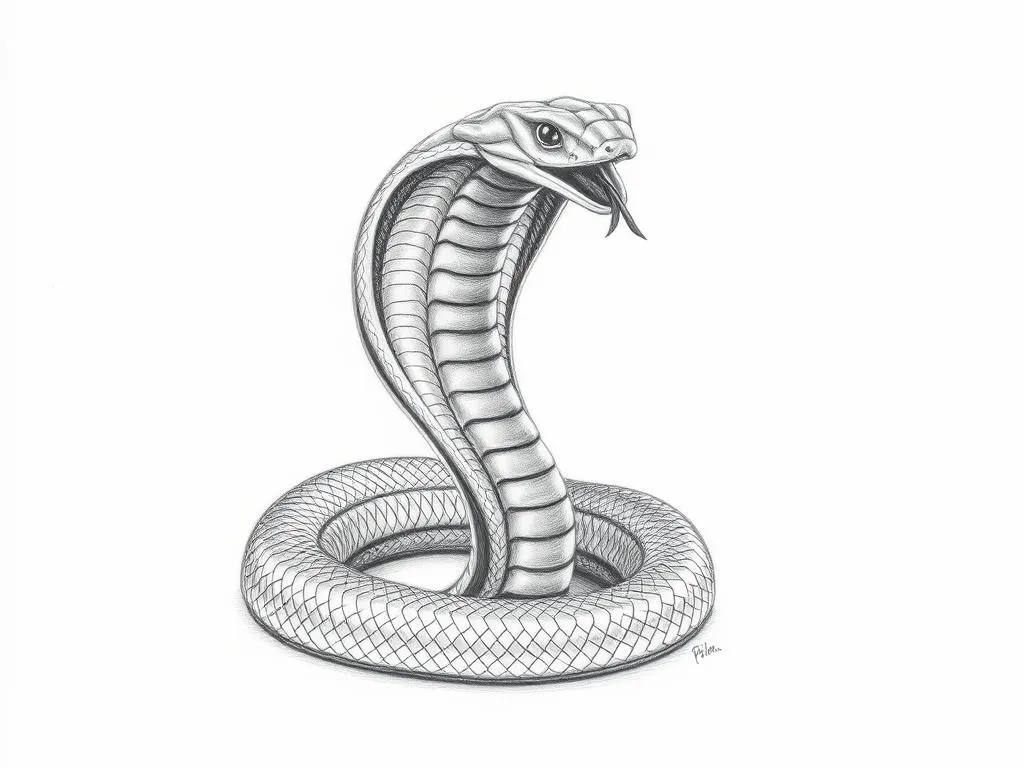
Symbolism & Spiritual Meaning
Transformation and Adaptability
The false cobra is often associated with themes of transformation and adaptability. In many cultures, snakes symbolize change due to their ability to shed their skin. The false cobra, with its impressive mimicry and defensive behaviors, embodies the idea of adapting to one’s surroundings and overcoming challenges. This adaptability serves as a powerful reminder of the importance of embracing change in our own lives.
Illusion and Deception
Mimicry is a defining characteristic of the false cobra, and this trait reflects deeper themes of illusion and deception. The snake’s ability to imitate the appearance of more dangerous cobras raises questions about perception versus reality. In spiritual contexts, this symbolism encourages individuals to look beyond surface appearances and seek deeper truths in their lives.
Understanding that not everything is as it seems can lead to personal growth and enlightenment. The false cobra teaches us the value of discernment and the importance of questioning our assumptions.
Protection and Defense
The defensive behaviors of the false cobra serve as a symbol of protection and self-defense. In a spiritual context, this symbolizes the necessity of establishing boundaries and protecting oneself from external threats. Just as the false cobra flattens its neck to ward off predators, individuals are encouraged to develop their own protective mechanisms, whether emotional, physical, or spiritual.
In times of uncertainty or vulnerability, embracing the protective qualities of the false cobra can empower individuals to stand their ground and assert their needs.
False Cobra in Dreams
Interpreting Dream Encounters
Dreams featuring the false cobra can hold significant meanings. Below is a table outlining common themes and interpretations associated with dreaming of a false cobra:
| Dream Element | Possible Meaning |
|---|---|
| Seeing a false cobra | A warning to be cautious about deception in life |
| Being chased by a false cobra | Feelings of anxiety or avoidance of a situation |
| Holding a false cobra | Embracing change and personal transformation |
| Killing a false cobra | Overcoming fears or illusions |
When the false cobra appears in dreams, it often encourages introspection and self-awareness. The dreamer may need to reflect on areas of their life where they are facing challenges or where they may be deceived by false appearances.
Messages of Caution
Dreams featuring the false cobra can serve as cautionary tales, alerting individuals to potential dangers or challenges they may need to confront. The false cobra’s defensive nature emphasizes the importance of being vigilant and aware of one’s surroundings. These dreams can prompt individuals to assess their personal relationships, work situations, or emotional well-being, encouraging them to confront issues that may have been overlooked.
Connection to Intuition
When a false cobra appears in dreams, it can signify a connection to one’s intuition and heightened awareness. The serpent’s ability to navigate its environment with agility and grace invites dreamers to trust their instincts and embrace their inner wisdom. This connection to intuition can guide individuals toward making decisions that align with their true selves.
Modern Interpretations
Cultural Significance
The false cobra holds varying significance across different cultures and folklore. In many African cultures, snakes are revered as symbols of fertility, transformation, and healing. The false cobra, with its unique traits, often represents the delicate balance between danger and safety. Its ability to mimic true cobras can symbolize the duality of existence, where appearances may not always reflect reality.
Art and Literature
In contemporary art and literature, the false cobra serves as a metaphor for resilience and adaptability. Artists and writers often draw inspiration from its unique characteristics to explore themes of personal growth and transformation. The serpent’s presence in storytelling can serve as a reminder of the strength found in embracing one’s true nature, even in the face of adversity.
Symbol of Resilience
In modern society, the false cobra is increasingly seen as a symbol of resilience. Its ability to adapt to changing environments and defend itself against threats resonates with individuals navigating the complexities of life. The false cobra serves as an inspirational figure, encouraging people to embrace their challenges and emerge stronger on the other side.
Key Takeaways
- Embracing Change: The false cobra exemplifies the importance of adaptability and transformation in life.
- Seeing Beyond Illusions: Its mimicry teaches valuable lessons about discernment and the need to look beyond surface appearances.
- Protecting One’s Boundaries: The defensive nature of the false cobra emphasizes the significance of establishing personal boundaries for self-care and growth.
Conclusion
The false cobra is a multifaceted symbol that embodies themes of transformation, adaptability, and resilience. Its rich symbolism resonates deeply within both ancient and contemporary contexts, reminding us of the power of change and the necessity of self-protection. As we reflect on the characteristics and meanings associated with the false cobra, it invites us to consider how its lessons might resonate with our personal experiences and journeys. Whether facing challenges or embracing change, the spirit of the false cobra encourages us to navigate life with awareness, discernment, and resilience.
